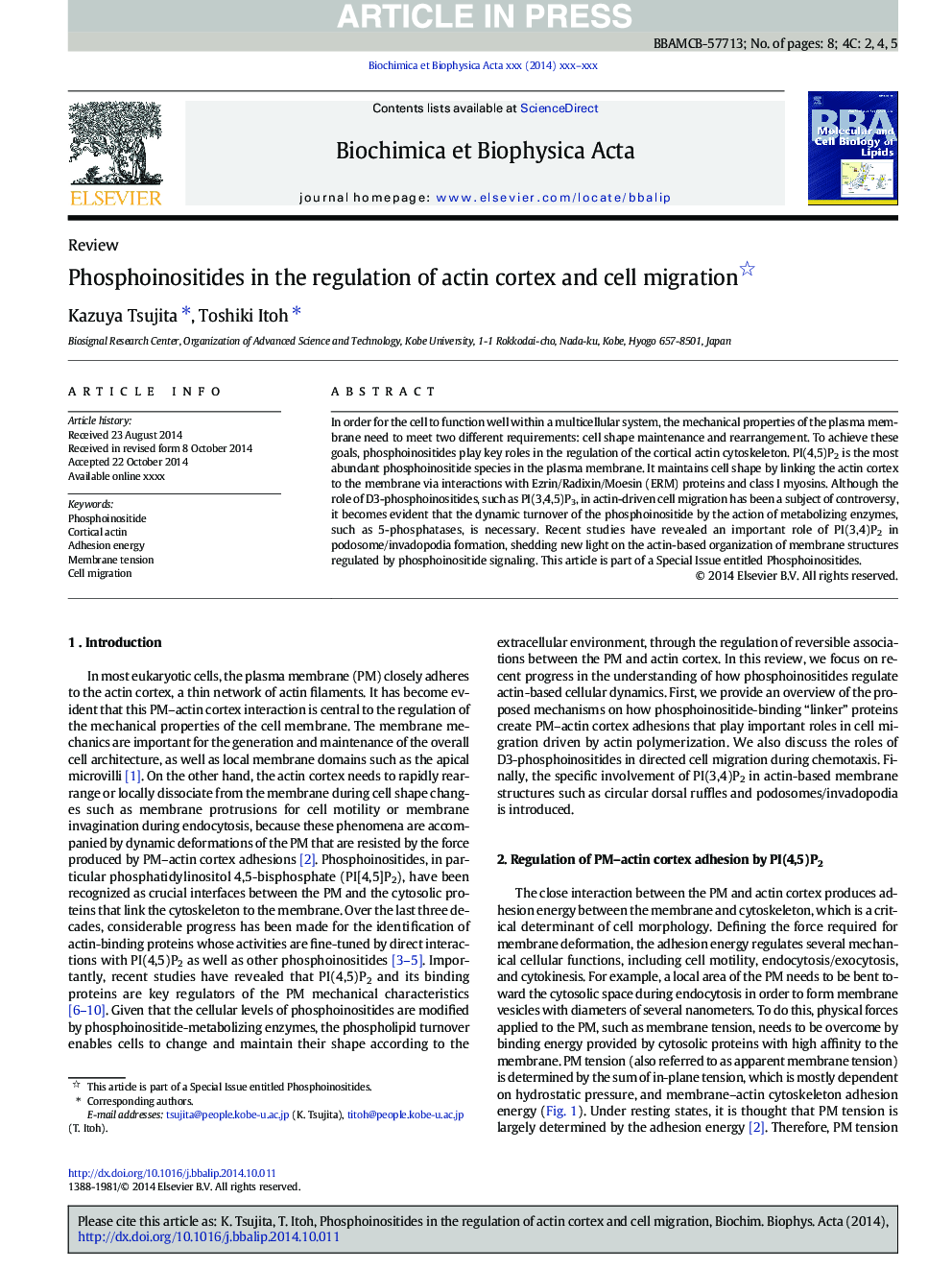| Article ID | Journal | Published Year | Pages | File Type |
|---|---|---|---|---|
| 8302023 | Biochimica et Biophysica Acta (BBA) - Molecular and Cell Biology of Lipids | 2015 | 8 Pages |
Abstract
In order for the cell to function well within a multicellular system, the mechanical properties of the plasma membrane need to meet two different requirements: cell shape maintenance and rearrangement. To achieve these goals, phosphoinositides play key roles in the regulation of the cortical actin cytoskeleton. PI(4,5)P2 is the most abundant phosphoinositide species in the plasma membrane. It maintains cell shape by linking the actin cortex to the membrane via interactions with Ezrin/Radixin/Moesin (ERM) proteins and class I myosins. Although the role of D3-phosphoinositides, such as PI(3,4,5)P3, in actin-driven cell migration has been a subject of controversy, it becomes evident that the dynamic turnover of the phosphoinositide by the action of metabolizing enzymes, such as 5-phosphatases, is necessary. Recent studies have revealed an important role of PI(3,4)P2 in podosome/invadopodia formation, shedding new light on the actin-based organization of membrane structures regulated by phosphoinositide signaling. This article is part of a Special Issue entitled Phosphoinositides.
Related Topics
Life Sciences
Biochemistry, Genetics and Molecular Biology
Biochemistry
Authors
Kazuya Tsujita, Toshiki Itoh,
